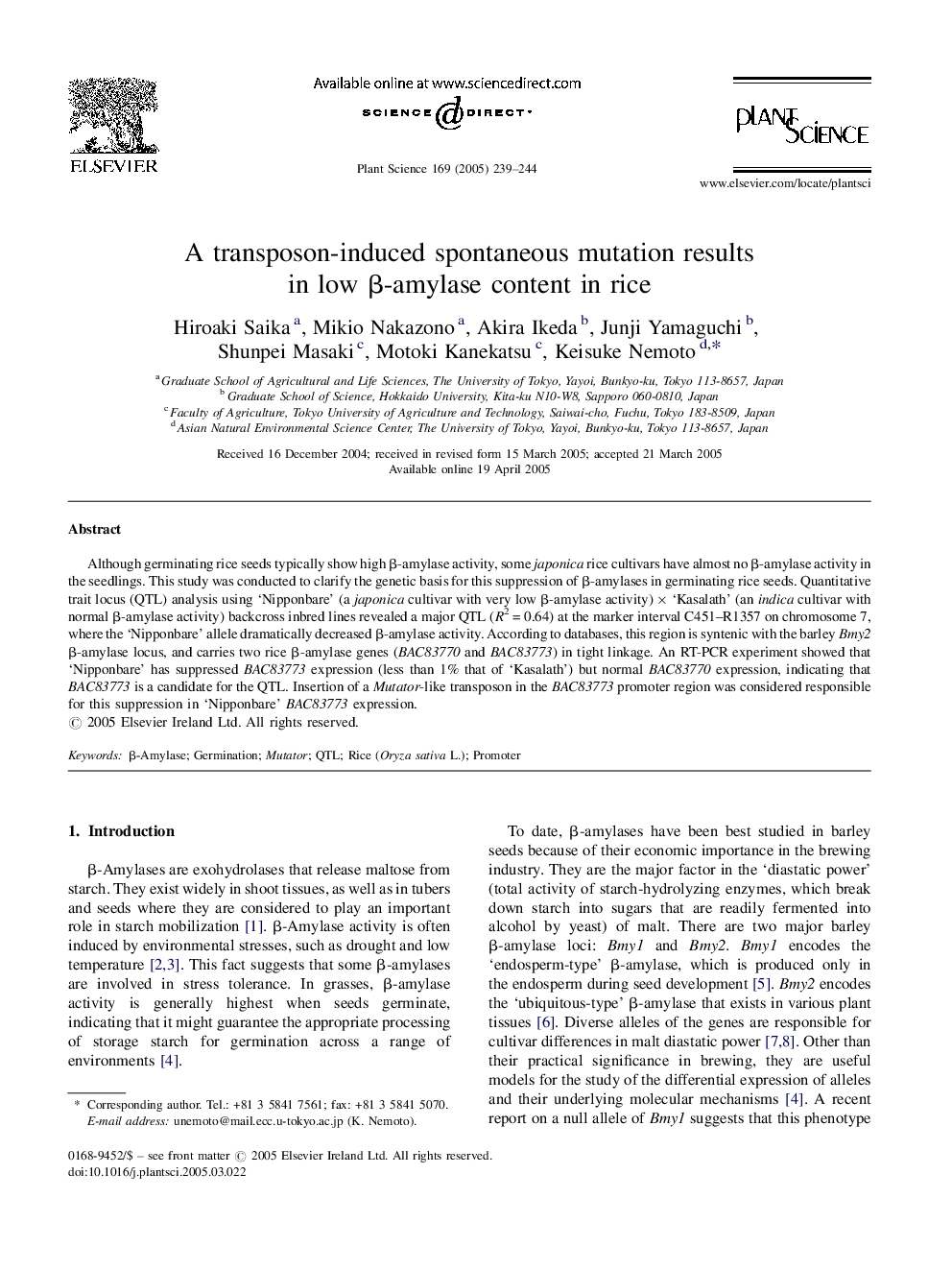| Article ID | Journal | Published Year | Pages | File Type |
|---|---|---|---|---|
| 10842007 | Plant Science | 2005 | 6 Pages |
Abstract
Although germinating rice seeds typically show high β-amylase activity, some japonica rice cultivars have almost no β-amylase activity in the seedlings. This study was conducted to clarify the genetic basis for this suppression of β-amylases in germinating rice seeds. Quantitative trait locus (QTL) analysis using 'Nipponbare' (a japonica cultivar with very low β-amylase activity) Ã 'Kasalath' (an indica cultivar with normal β-amylase activity) backcross inbred lines revealed a major QTL (R2 = 0.64) at the marker interval C451-R1357 on chromosome 7, where the 'Nipponbare' allele dramatically decreased β-amylase activity. According to databases, this region is syntenic with the barley Bmy2 β-amylase locus, and carries two rice β-amylase genes (BAC83770 and BAC83773) in tight linkage. An RT-PCR experiment showed that 'Nipponbare' has suppressed BAC83773 expression (less than 1% that of 'Kasalath') but normal BAC83770 expression, indicating that BAC83773 is a candidate for the QTL. Insertion of a Mutator-like transposon in the BAC83773 promoter region was considered responsible for this suppression in 'Nipponbare' BAC83773 expression.
Related Topics
Life Sciences
Agricultural and Biological Sciences
Plant Science
Authors
Hiroaki Saika, Mikio Nakazono, Akira Ikeda, Junji Yamaguchi, Shunpei Masaki, Motoki Kanekatsu, Keisuke Nemoto,
